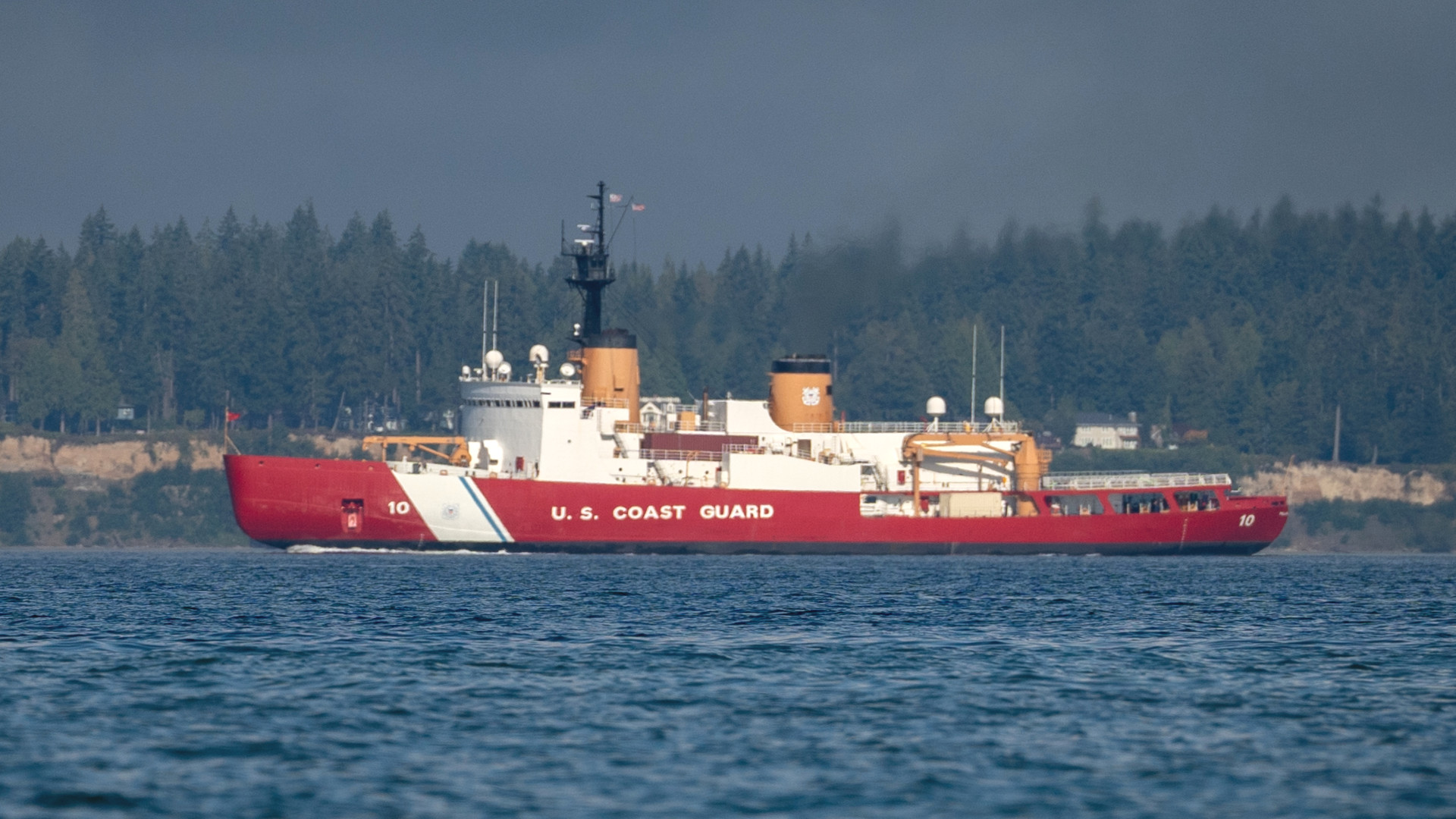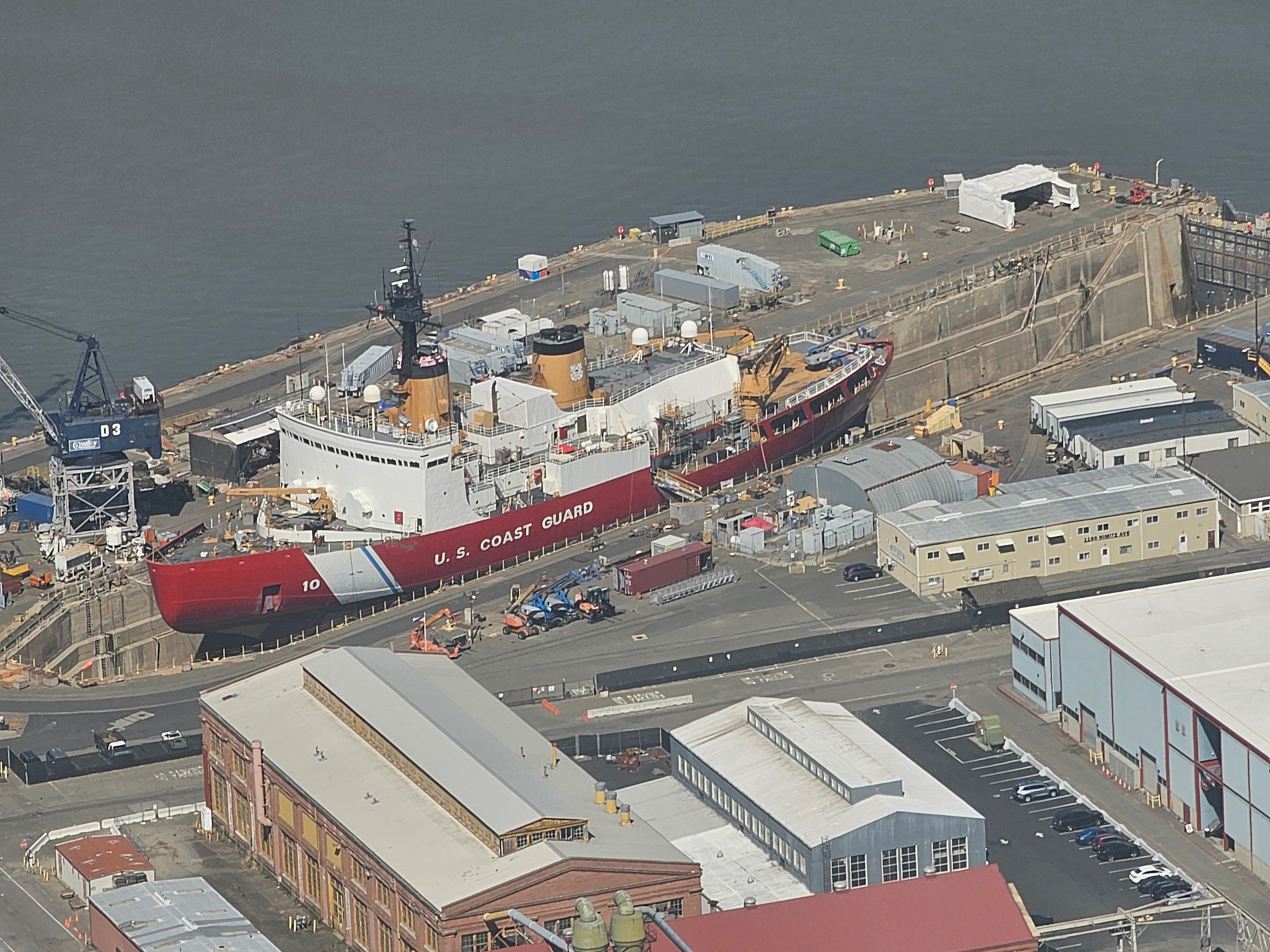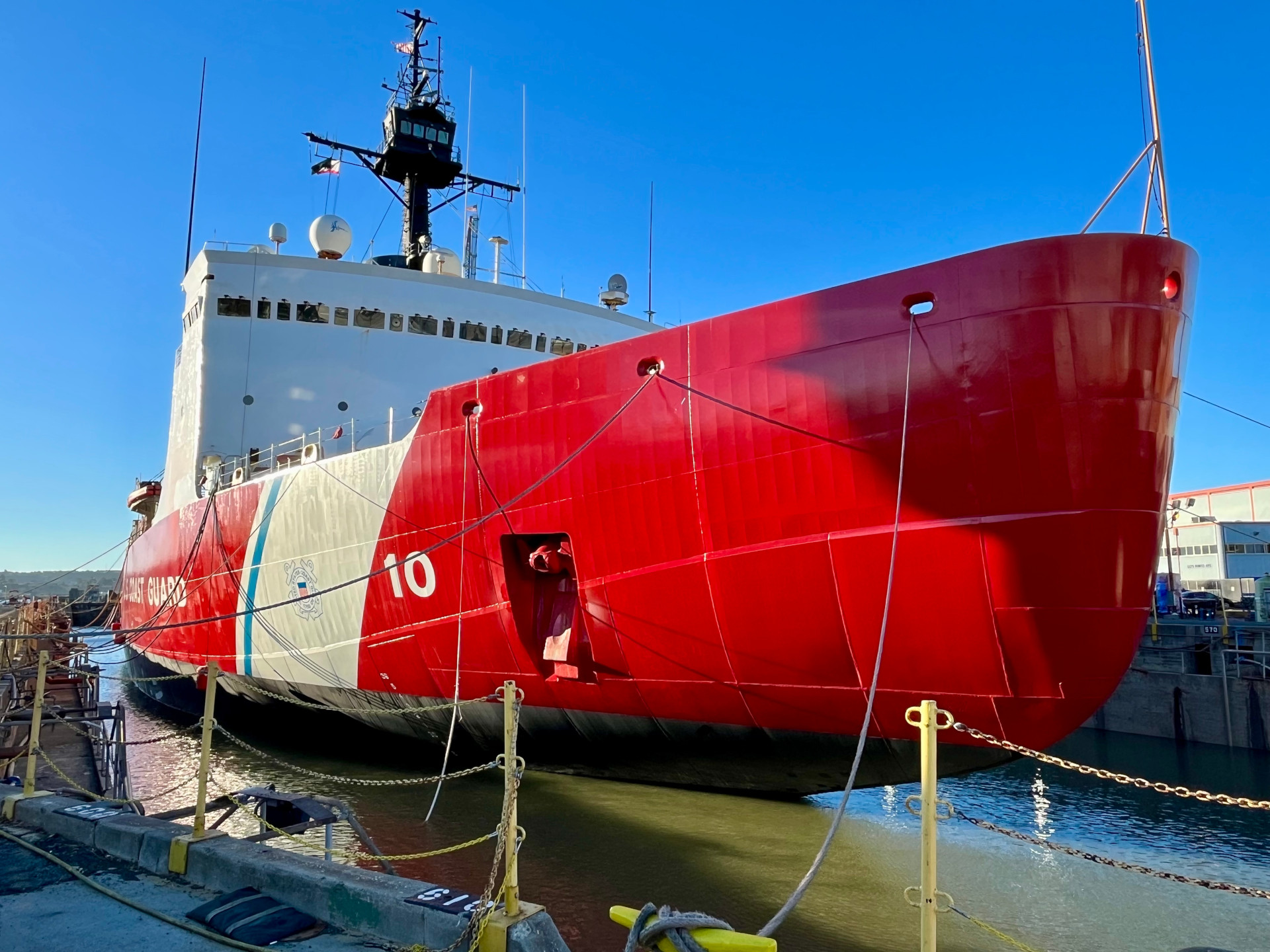The U.S. Coast Guard’s heavy icebreaker USCGC Polar Star has returned to its home port of Seattle, Washington, after a major service life-extending overhaul – and not a moment too soon. The medium icebreaker USCGC Healy, the service’s only other icebreaker available for operations in the Arctic and Antarctica, also sailed back into Seattle earlier this month after suffering a fire that forced its crew to abandon a planned deployment to the High North. You can read more about that incident, which shined a glaring light on the inadequacy of the Coast Guard’s icebreaker fleets, in the War Zone‘s previous reporting here.
Polar Star sailed back into Seattle on August 25 following the completion of the fourth phase of a Service Life Extension Project (SLEP) at Mare Island Dry Dock (MIDD) in Vallejo, California. The ship was away from home for 285 days, of which around 140 days were actually spent on the overhaul. The SLEP has been ongoing in this incremental way since 2021 and is set to keep the ship, which first entered service in 1976, operational at least through next year.

As part of phase four of the SLEP “boiler support systems were recapitalized, including the electrical control station that operates them,” and “the heating, ventilation and air conditioning (HVAC) system was refurbished through the overhaul of ventilation trunks, fans and heaters that supply the cutter’s berthing areas,” according to a release the Coast Guard put out yesterday. “The flooding alarm system was redesigned, providing the ability to monitor machinery spaces for flooding from bow to stern.”

“Additional work not typically completed every dry dock included removing and installing the starboard propulsion shaft, servicing and inspecting both anchor windlasses, inspecting and repairing anchor chains and ground tackle, cleaning and inspecting all main propulsion motors and generators, installation of an isolation valve to prevent seawater intrusion into the sanitary system, and overhauling the fuel oil purifier,” the release adds.

“Completing a dry dock availability is a positive milestone, and despite challenges due to being away from home port, our crew’s energy and resilience inspires me every day,” Coast Guard Capt. Jeff Rasnake, Polar Star’s commanding officer, said in a statement. “The amount of time and effort put into Polar Star and its mission is truly remarkable.
“The dedication and teamwork displayed across all stakeholders exemplifies the Coast Guard’s flexibility and commitment to ensuring the continued success of Operation Deep Freeze, as well as strengthened partnerships among nations invested in the Antarctic latitudes,” Rasnake continued. “I look forward to observing how this crew will continue to grow as a team and to discovering what we can accomplish together.”

Rasnake can-do attitude stands in stark contrast to the Coast Guard’s current icebreaking capacity. While Polar Star continues to be the world’s most powerful non-nuclear icebreaker, it is also the only one in U.S. service capable of operating year-round in Arctic and Antarctic waters.
Heavy icebreakers like Polar Star are “defined as ships that have icebreaking capability of 6 feet of ice continuously at 3 knots, and can back and ram through at least 20 feet of ice,” according to a report from the National Research Council of the National Academies. The medium icebreaker “Healy is designed to break 4.5 feet of ice continuously at three knots,” according to the Coast Guard.
Healy, which was commissioned in 1999, is also now sidelined following the fire that occurred on July 25 while the ship was sailing near Banks Island, the westernmost island in Canada’s Arctic Archipelago. The ship was able to make it back under its own power, but is in need of repairs and its unclear how long it might take to do that work.

“Coast Guard Cutter Healy… had an electrical fire in the engineering spaces; she’s now having to return to home port to try and affect repairs,” Vice Commandant of the Coast Guard Adm. Kevin Lunday said at a talk at the Brookings Institution think tank in Washington, D.C., hosted on August 7. “Most of the machinery systems aboard are antiquated and for some there aren’t even parts. We’re going to work as hard as we can to repair it and try to preserve the rest of the patrol but that’s in doubt.”
Polar Star has to deal with the same kinds of sustainment difficulties and its sister ship USCGC Polar Sea has been being cannibalized for spare parts for decades now.
The Coast Guard has been working to acquire new Polar Security Cutter (PSC) heavy icebreakers, but that program has suffered substantial delays and the first of those ships may not arrive until 2028.

The service is now in the process of buying another medium icebreaker, the Aiviq, which has been operating in the commercial sector since the early 2010s. However, various modifications have to be made to that ship first and it currently is not expected to begin sailing operationally in Coast Guard colors from its new home port in Juneau, Alaska, until sometime in 2026.

The U.S. government is well aware of the inadequacy of its icebreaking fleets. In July, U.S. authorities, along with their counterparts in Canada and Finland, announced the creation of a new Icebreaker Collaboration Effort, or ICE Pact, to help meet projected demand for up to 90 icebreakers over the next decade across multiple allied nations. Later that month, the Pentagon released a new Arctic Strategy that outlines key tenets “to preserve the Arctic as a secure and stable region in which the U.S. Homeland is defended and our vital national interests are safeguarded.”
The strategic significance of the Arctic, especially, has already been growing in recent years as polar ice recedes due to global climate change, opening up new access to natural resources and trade routes. Russia has been particularly active in expanding its military presence in the region in recent years amid concerns that increased global competition there could lead to conflict. Russia also currently has the largest fleet of icebreakers anywhere in the world by far, which includes nuclear-powered (which the Russian government is currently the only operator of globally) and combat-capable types.
China, the U.S. government’s chief global competitor, also has a clear desire to become a more prominent actor in the High North and has also been increasingly teaming up with Russia to project military power in the region. A newly significant demonstration of the military cooperation between the two countries came in July when Russian Tu-95 Bear bombers and Chinese H-6K missile carrier aircraft flew together through a portion of the U.S. Air Defense Identification Zone (ADIZ) around Alaska. This was also the first time Chinese military aircraft had flown in this part of the northern end of the Pacific at all, marking a major power projection milestone for the Chinese People’s Liberation Army, in general.
So, while USCGC Polar Star‘s return to Seattle is welcome, it is also a bitter reminder of its limited icebreaking capacity, now made worse by Healy‘s accident, at a time when demand for these capabilities is only growing.
Contact the author: joe@twz.com
